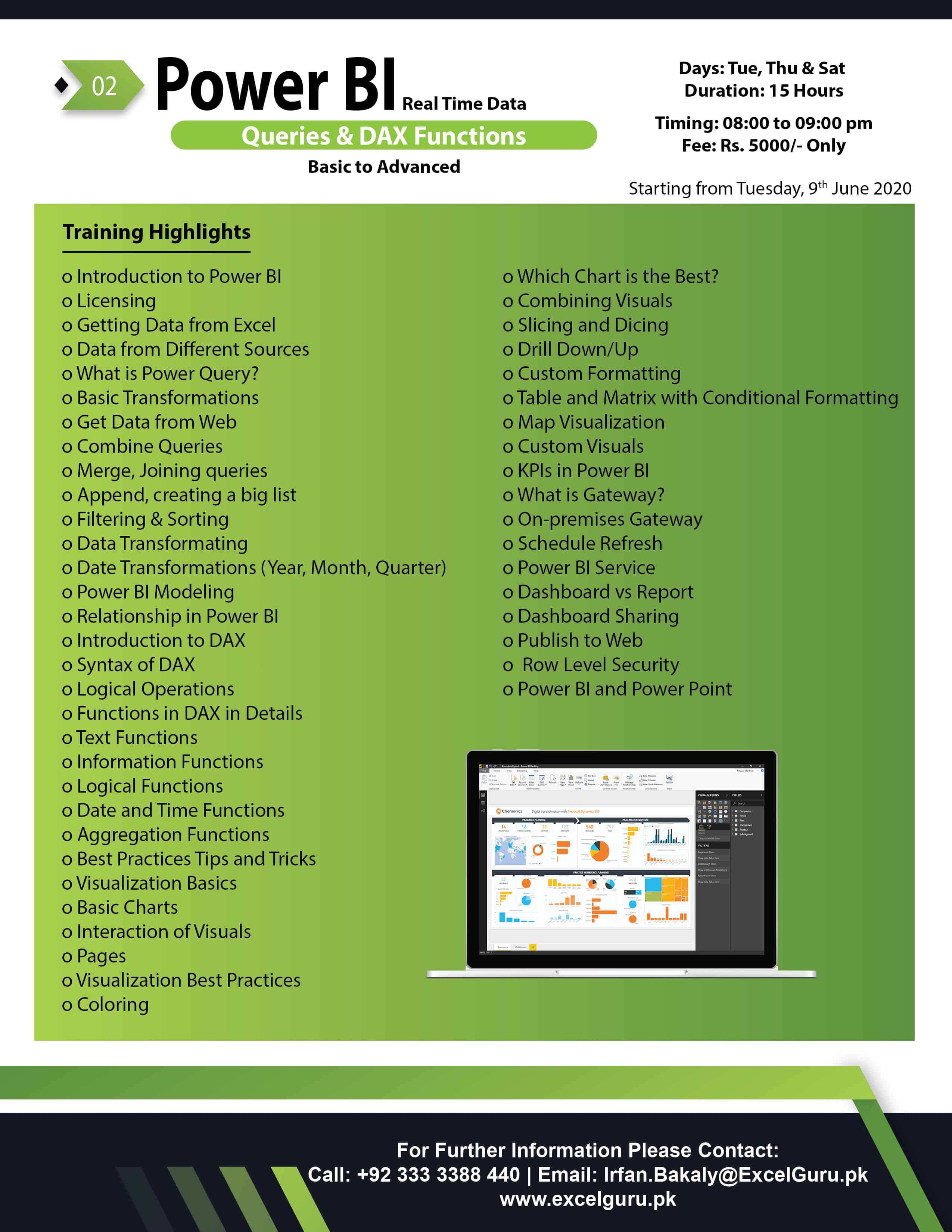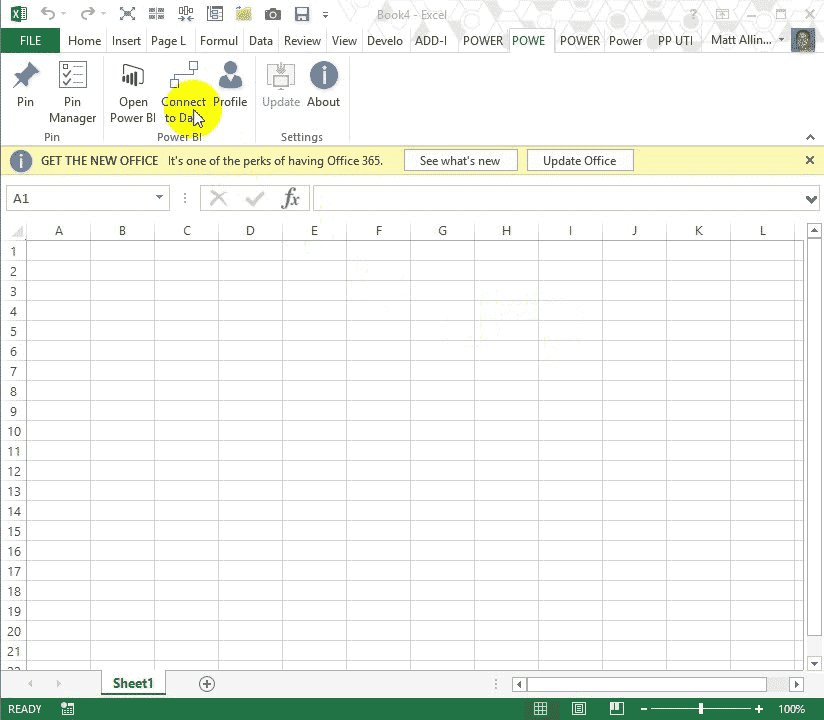Excel Data Source. Power Query or Power BI can connect to many data sources, one of the supported data sources in Excel. Power Query for Excel get data from Excel in this way: Power BI Desktop connects to Excel through Get Data experience. For getting data from excel you just need to specify path of the file. Power BI and Excel combination through the administration enables the client to utilize Excel as their cutting and dicing device while associated with a live Power BI dataset. Then again, you can stick a scope of cells from an Excel archive into Power BI dashboard. In this tutorial, I show yo how to write data to an Excel spreadsheet on multiple tabs! The nice thing about this approach is that you don't need to show any. With the Power BI Desktop you can visually explore your data through a free-form drag-and-drop canvas, a broad range of modern data visualizations, and an easy-to-use report authoring experience. Advanced download options. Microsoft Power BI Mobile. Access your data anywhere, anytime. These native apps provide live, interactive. I'll show you 5 different ways to export Power BI data to excel.Power BI Tutorial for Beginners & Excel Usershttps://www.youtube.com/watch?v=1bysgMsPwC4&lis.
-->Your manager wants to see a report on your latest sales and profit figures by the end of the day. But the latest data is in files on your laptop. In the past, it’s taken hours to create a report, and you’re beginning to feel anxious.
No worries. With Power BI, you can create a stunning report and share it in Microsoft Teams in no time!
In this tutorial, we upload an Excel file, create a new report, and share it with colleagues in Microsoft Teams, all from within Power BI. You'll learn how to:
- Prepare your data in Excel.
- Download sample data.
- Build a report in the Power BI service.
- Pin the report visuals to a dashboard.
- Share a link to the dashboard.
- Share the dashboard in Microsoft Teams
Prerequisites

- Sign up for the Power BI service.
- Download the Financial Sample workbook and save it your computer or to OneDrive for Business.

Prepare data in Excel
Let’s take a simple Excel file as an example.
Before you can load your Excel file into Power BI, you must organize your data in a flat table. In a flat table, each column contains the same data type; for example, text, date, number, or currency. Your table should have a header row, but not any columns or rows that display totals.
Next, format your data as a table. In Excel, on the Home tab, in the Styles group, select Format as Table.
Select a table style to apply to your worksheet.
Your Excel worksheet is now ready to load into Power BI.
Upload your Excel file to the Power BI service
The Power BI service connects to many data sources, including Excel files that live on your computer.
To get started, sign in to the Power BI service. If you haven’t signed up, you can do so for free.
In My workspace, select New > Upload a file.
Select Local File, browse to where you saved the Financial Sample Excel file, and select Open.
On the Local File page, select Import.
Now you have a Financial Sample dataset. Power BI also automatically created a blank dashboard. If you don't see the dashboard, refresh your browser.
You want to create a report. Still in My workspace, select New > Report.
In the Select a dataset to create a report dialog box, select your Financial Sample dataset > Create.

Build your report
Power Bi For Excel Download
The report opens in Editing view and displays the blank report canvas. On the right are the Visualizations, Filters, and Fields panes. Your Excel workbook table data appears in the Fields pane. At the top is the name of the table, financials. Under that, Power BI lists the column headings as individual fields.
You see the Sigma symbols in the Fields list? Power BI has detected that those fields are numeric. Power BI also indicates a geographic field with a globe symbol.
To have more room for the report canvas, select Hide the navigation pane, and minimize the Filters pane.
Now you can begin to create visualizations. Let's say your manager wants to see profit over time. In the Fields pane, drag Profit to the report canvas.
By default, Power BI displays a column chart with one column.
Drag Date to the report canvas.
Power BI updates the column chart to show profit by date.
December 2014 was the most profitable month.
Tip
If your chart values don't look as you expect, check your aggregations. For example, in the Values well, select the Profit field you just added and ensure the data is being aggregated the way you'd like it. In this example, we're using Sum.
Create a map
Your manager wants to know which countries are the most profitable. Impress your manager with a map visualization.
Select a blank area on your report canvas.
From the Fields pane, drag the Country field to your report canvas, then drag the Profit field to the map.
Power BI creates a map visual with bubbles representing the relative profit of each location.
Looks like the European countries are outperforming the North American countries.
Create a visual showing sales
What about displaying a visual showing sales by product and market segment? Easy.
Select the blank canvas.
In the Fields pane, select the Sales, Product, and Segment fields.
Power BI creates a clustered column chart.
Change the type of chart by choosing one of the icons in the Visualizations menu. For instance, change it to a Stacked column chart.
To sort the chart, select More options (...) > Sort by.
Spruce up the visuals
Power Bi For Excel Install
Make the following changes on the Format tab in the Visualizations pane.
Select the Profit by Date column chart. In the Title section, change Text size to 16 pt. Toggle Shadow to On.
Select the Sales by Product and Segment stacked column chart. In the Title section, change title Text size to 16 pt. Toggle Shadow to On.
Select the Profit by Country map. In the Map styles section, change Theme to Grayscale. In the Title section, change title Text size to 16 pt. Toggle Shadow to On.
Pin to a dashboard
Now you can pin all of your visuals to the blank dashboard that Power BI created by default.
Hover over a visual and select Pin visual.
You need to save your report before you can pin a visual to the dashboard. Give your report a name and select Save.
Pin each visual to the dashboard that Power BI created, Financial Sample.xlsx.
When you pin the last visual, select Go to dashboard.
Power BI added a placeholder Financial Sample.xlsx tile to the dashboard automatically. Select More options (...) > Delete tile.
Rearrange and resize the tiles any way you want.
The dashboard and report are ready.
Share a link to your dashboard
Now it's time to share your dashboard with your manager. You can share your dashboard and underlying report with any colleague who has a Power BI account. They can interact with your report, but can't save changes. If you allow it, they can reshare with others, or build a new report based on the underlying dataset.
To share your report, at the top of the dashboard, select Share.
In the Share dashboard page, enter the email addresses of the recipients in the Enter email addresses box and add a message in the box below it.
Decide which of these options you want, if any:
- Allow recipients to share your dashboard.
- Allow recipients to build new content using the underlying datasets.
- Send an email notification to recipients.
Select Share.
Share to Microsoft Teams
You can also share reports and dashboards directly to your colleagues in Microsoft Teams.
To share in Teams, at the top of the dashboard, select Chat in Teams.
Power BI displays the Share to Teams dialog. Enter the name of a person, group, or channel and select Share.
The link appears in the Posts for that person, group, or channel.
Next steps
- Now that you've created a basic report in the Power BI service, how about creating a report in Power BI Desktop? Try the tutorial, From Excel workbook to stunning report in Power BI Desktop.
More questions? Try the Power BI Community.
Whether you’re on the go or need to create rich, interactive reports, download the tools you need to build reports and stay connected to your data from anywhere, anytime. Get a 360° view of your business data on the go—at the touch of your fingers—and quickly connect, shape, visualize, and share data insights through Power BI.
Microsoft Power BI Desktop

With the Power BI Desktop you can visually explore your data through a free-form drag-and-drop canvas, a broad range of modern data visualizations, and an easy-to-use report authoring experience.
Microsoft Power BI Mobile
Access your data anywhere, anytime. These native apps provide live, interactive, mobile access to your important business information.

Microsoft on-premises data gateway
Keep your dashboards and reports up to date by connecting to your on-premises data sources—without the need to move the data.
On-premises reporting with Power BI Report Server
Deploy and distribute interactive Power BI reports—and traditional paginated reports—within the boundaries of your organization’s firewall.
Microsoft Power BI Report Builder
Create pixel-perfect paginated reports for printing or electronic distribution with a familiar experience relied on by thousands of report authors.
Okay, let's get your download started!
Let us know where we can send you tips and tricks for getting started fast with Power BI.




